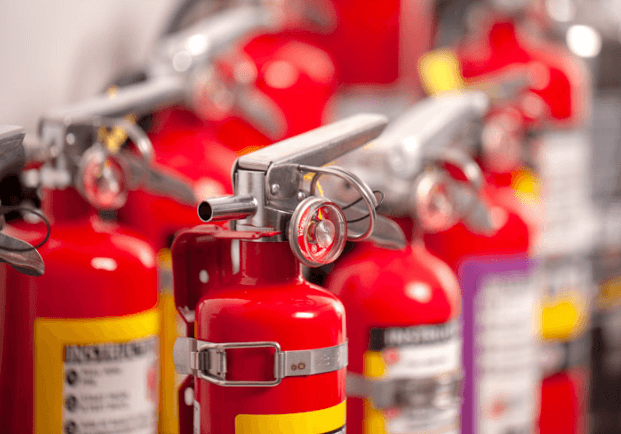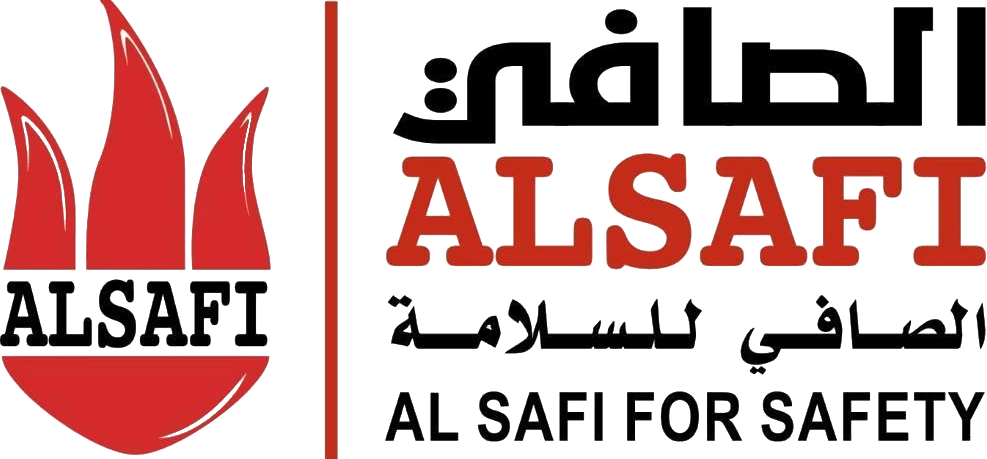The best types of fire extinguishers and how to choose them

Fire extinguishers are essential tools for controlling and putting out fires, playing a vital role in protecting lives and property. Fire extinguisher types can be classified according to the type of fire they are designed to combat.
Fire extinguishers come in a variety of types, each designed to handle specific fire categories. Since fires differ depending on the burning materials, it is important to choose the right extinguisher for the expected fire type.
Types of Fire Extinguishers:
Here are the main types of fire extinguishers and their classifications according to fire type:
- Water Extinguisher: Used for fires caused by solid materials such as wood, paper, and textiles. Not effective on flammable liquids or electrical fires.
- Foam Extinguisher: Used for fires caused by flammable liquids (Class B) and also effective on some Class A fires.
- Carbon Dioxide (CO2) Extinguisher: Suitable for electrical fires and fires caused by flammable liquids. Works by reducing oxygen and extinguishing flames.
- Dry Powder Extinguisher: Effective on most fire types (A, B, C), including fires caused by solids, flammable liquids, and gases.
- Wet Chemical Extinguisher: Mainly used for fires caused by oils and fats in kitchens (Class F fires).
You can contact us at Al-Safi Safety Systems for more inquiries about fire extinguishers.
Types of Manual Fire Extinguishers
The first moments of a fire outbreak are critical to limiting its spread. Manual fire extinguishers are essential tools for tackling fires in their early stages. They are used directly and quickly to control flames before firefighting teams arrive. Fire extinguishers vary according to fire type and location, and each type has a specific function to help control the situation efficiently. Here are the most common types of manual extinguishers:
- Handheld Fire Extinguishers: The most common type, divided into several kinds according to the extinguishing material used:
- Dry Powder Extinguisher: Multi-purpose, suitable for fires involving solids, flammable liquids, and gases.
- Carbon Dioxide (CO₂) Extinguisher: Suitable for electrical fires and leaves no residue.
- Foam Extinguisher: Used for liquid fires such as gasoline and oils; smothers fire with a protective layer.
- Water Pressure Extinguisher: Suitable for solid material fires such as paper and wood, but not for electrical or flammable liquid fires.
- Fire Blankets: Used to extinguish small fires, especially those on clothing or kitchen items. Safe and easy to use without prior experience.
- Sand Bucket: Used for flammable liquid fires, particularly in workshops and industrial areas, as sand smothers the flames and prevents spread.
- Water Bucket: A simple traditional tool for fires involving solids like wood or paper; not recommended for oil or electrical fires.
- Manual Fire Pump (Hand Sprayer): Filled with water or extinguishing solution and manually pressed to spray flames; useful in small or agricultural areas.
Choosing the Right Fire Extinguisher:
1. Water Extinguisher
- Uses: Suitable for fires involving solid materials such as wood, paper, and textiles (Class A).
- Advantages: Effective, easy to use, leaves no residue.
- Risks: Should not be used on electrical or flammable liquid fires.
2. Foam Extinguisher
- Uses: Effective against solid (Class A) and flammable liquid fires (Class B).
- Advantages: Helps cool the fire and prevent re-ignition.
- Risks: Not suitable for electrical fires.
3. Carbon Dioxide (CO2) Extinguisher
- Uses: Suitable for electrical (Class C) and flammable liquid fires (Class B).
- Advantages: Leaves no residue and does not damage electrical equipment.
- Risks: May be ineffective in open spaces where gas disperses quickly; can cause suffocation in enclosed areas.
4. Dry Powder Extinguisher
- Uses: Suitable for most fire types including solids (Class A), flammable liquids (Class B), flammable gases (Class C), and some combustible metals (Class D).
- Advantages: Multi-purpose and effective for rapid fire suppression.
- Risks: May leave residue that is hard to clean; reduces visibility and can cause breathing difficulties in enclosed areas.
5. Wet Chemical Extinguisher
- Uses: Designed for kitchen fires involving oils and fats (Class F).
- Advantages: Cools burning oil and creates a soapy layer to prevent re-ignition.
- Risks: Not suitable for other fire types.
Choosing the right extinguisher depends on knowing the materials in the protected area. Al-Safi Safety Company offers suitable extinguisher types for every fire, ensuring effective and rapid control while minimizing damage and losses.
Frequently Asked Questions about Fire Extinguishers
What type of extinguisher is suitable for electrical fires?
Carbon Dioxide (CO2) extinguishers are best for electrical fires, as they leave no harmful residue and do not damage equipment.
Can one extinguisher be used for all fire types?
No, extinguishers differ according to fire type. Using the wrong type may worsen the fire, so selecting the correct extinguisher is essential.
How often should a fire extinguisher be inspected?
Monthly checks are recommended to ensure proper function, with a comprehensive annual maintenance by a specialized company.
Do fire extinguishers differ between home and commercial use?
Yes, commercial or industrial use requires higher-capacity extinguishers and multiple types according to the risk present.



